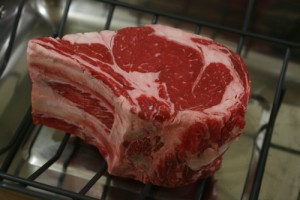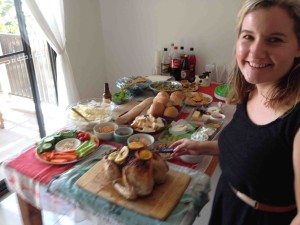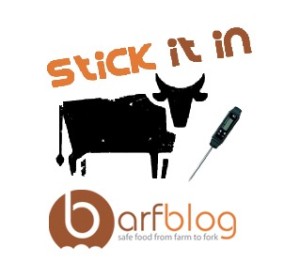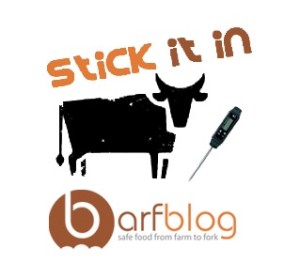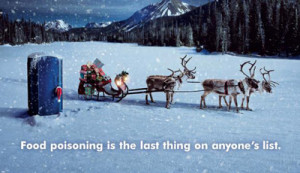I like my burgers at 165 F.
I don’t know what a medium-rare burger means, and neither do most of the people ordering and preparing hamburgers.
 There’s no definition, other than BS visual cues or B finger touching, or BS guesswork because, “we’ve always done it this way and never made anyone sick.”
There’s no definition, other than BS visual cues or B finger touching, or BS guesswork because, “we’ve always done it this way and never made anyone sick.”
More BS.
Worse is when the BS is coming from a publicly funded so-called science-based food safety agency – like the one in the UK.
According to the Mirror, experts say ordering a medium rare burger could contain dangerous bacteria that may lead to food poisoning or worse, be potentially fatal.
This is because bacteria, such as salmonella, listeria, campylobacter and E. coli, live on the outside of meat so searing steaks and cuts of beef and lamb would kill anything harmful, even when it’s still pink inside (unless it had been needle tenderized).
But as burgers are minced up those bugs that were on the outside are then on the inside and therefore should be cooked thoroughly, experts say.
The revelations were made as part of new four-part Channel 4 documentary Tricks of the Restaurant Trade, which explores the secrets of eating out.
Hugh Pennington, professor of bacteriology and leading expert of food poisoning, spoke to the programme and said he wants undercooked burgers banned.
“The problem with rare burgers is that you might fall ill from eating a bug that’s contained in the rare burger.
 “You only have to eat about one bacterium to get a potentially lethal infection.”
“You only have to eat about one bacterium to get a potentially lethal infection.”
In the episode aired tonight, the programme tested meat from some of the country’s top burger chains, with some shocking results.
A burger from Byron, a trendy gourmet burger restaurant, was found to contain Listeria innocua, the least dangerous strain of the bug but on rare occasions it can kill.
The chain said it was something they would be investigating.
A spokesman for Byron said ‘We have a comprehensive food management system to assure the safety of the food we serve.
‘We are proud of the quality of our beef and the rigour of these systems.”
You can say that with a straight face? Then show the burger-consuming public what the rigourous system actually is, instead of talking like a PR flunky.
It came after the Food Standards Agency released guidelines advising chains to warn about harmful bacteria.
The advice, released in September 2015, said restaurants should provide warnings on menus to vulnerable groups, like children, the elderly and pregnant women.
It also said only well done burgers should be served to children, especially the very young.
The programme sent in two young people, 11-year-old Abbie and 15-year-old Jamie, to three top burger chain restaurants to test the policy with some shocking results.
The first restaurant they tried was Gourmet Burger Kitchen (GBK) where they were given no warnings on the menu and served a medium rare burger.
Next they went to Byron where the menu did contain a warning but staff still served the youngsters undercooked meat.
Finally they went to Honest Burgers where there was also no caution on the menu and the kids managed to get their hands on what appeared to be the rarest serving of the three.
GBK said that as of January 2016 the new FSA advice would be put on our menus, while Honest Burgers said it would add it on its next print run.
More BS.
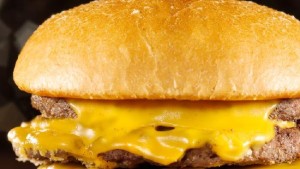 But why not listen to actor Les Hill who says he has roamed the earth on a worldwide odyssey to hunt down, and build, the ultimate burger.
But why not listen to actor Les Hill who says he has roamed the earth on a worldwide odyssey to hunt down, and build, the ultimate burger.




